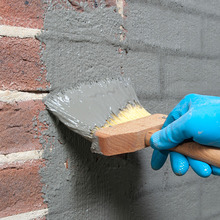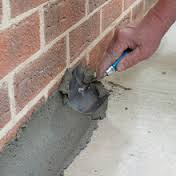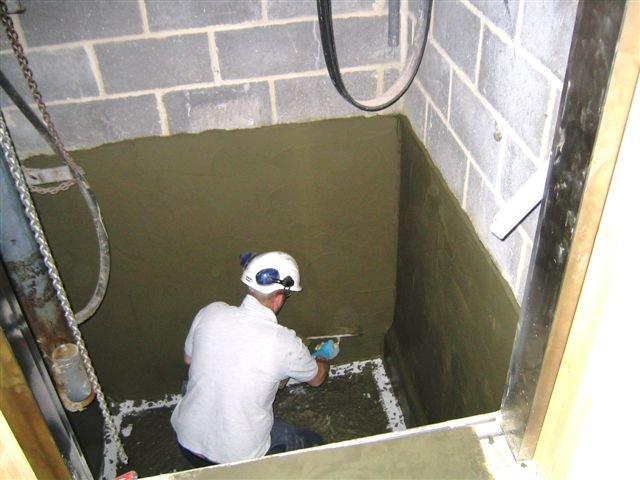News
Cementitious Tanking Slurry Render
Cementitious tanking slurry render is a multi-use, single component cement based powder that you simply add water to, to form a polymer modified damp proofing and water proofing barrier.
Arguably, cementitious tanking slurry is one of the most commonly and longest used products in damp proofing and structural waterproofing. That doesn’t mean to say its the best method of damp proofing and waterproofing but without doubt, it is a tried and tested product used by speciliast contractors, builders and plasterers and applied following manufacturers guidance documents to the letter, will provide an effective damp proof or water proof barrier for many years.
Cementitious tanking slurry render is produced by many well known manufacturers under many different brand names such as:
Koster – NB1
Sika – Sika Damp Proof Slurry
Triton – TT55
Sovereign – Hey’di K11
Wykamol – Hydradry
Vandex – BB75
Cementone – Tanking Slurry
+John Newton – Newton 107F
National Cement – Natcem 35
It is not unreasonable to say, there is little difference in performance across all makes and brands. Some withstand 7 bar pressure and others as much as 10 bar pressure but if hydrostatic pressure were a factor in choosing your product and a 10 bar pressure performance were needed, you would probably be advised to consider the alternative of a cavity drain membrane installation with drainage which would offer a longer lasting solution.
Cementitious tanking slurry render works!! No matter if you have a £20 a bag product or £100. What commonly fails is a lack of suitable preparation work to the walls and floor it is being applied to in order a sound bond is formed between the tanking slurry and the host surface.
Floors should be thoroughly cleaned and be free of dirt, dust, grease, oil and other contaminants. Walls should be free of the same contaminants but also free of former paint applications, taken back to brick or block and mortar rebated by at least 15mm.
In some cases, it is as well to apply a basecoat of Universal Mortar or sand and cement render to 10mm thick containing salt inhibitors or treating aggressive salts first in the prep stage with a suitable salt neutraliser.
The only added component to most brands of cementitious tanking slurry render is clean water. The volume of water does vary a little with many of the brands and you should read the guidance document carefully before adding. Mix in a large mixing bucket with an electric mixing paddle.
Tanking slurry can be either brush applied or trowel applied. On large scale jobs it can be spray applied but in the main, we advise the use of a good quality masonry brush.

Above ground damp proofing typically only require a one coat application of 1.5 or 2mm thick. Below ground applications should receive two coats of the same thickness. The second coat should be applied in the opposite direction to the first coat.
Second coats can be applied as soon as the first coat has become touch dry but in warm conditions or the first coat has dried out fully, you should apply a fine mist coat of water across the first coat to dampen it down slightly.
It is advised tanking renders are protected by a top coat. This can be in the form of a sand and cement render using 4:1, washed sharp sand, Ordinary Portland Cement or a suitable renovating plaster. The finish coat should be a porous skim plaster, applied when the cement render coats are fully cured, bonding or skimming plaster should not be applied directly to the Triton TT55 layer.
Once replastering is complete and dry, trade matt emulsion can be applied.
Some additional pointers:
If applying below ground to walls and floor or to a soil retaining wall, you are advised to apply a fillet detail at the wall/floor junction. This can be a polymer modified Fillet slurry or a sand and cement mix, 3: 1 with 1: 1 mix of SBR and water.

Damp patches can often appear after the procedure. Unless you have completely failed to follow guidance documents, nine times out of ten, this will be down to condensation. Simply improve the ventilation along with some low level ambient background heating, this will dry down.
Do not use dehumidifiers to speed any curing or drying process or treating any condensation. This can lead to cracking and a failure of the tanking slurry.
Before applying, think ahead of the need for any fixings that have to go into the tanked walls such as radiator brackets, etc. Too late to anchor within the wall once the tanking has been applied but ahead think about anchoring points using polymer modified resin, epoxy resin, Vinylester resin or waterproof grout.
We are delighted to be distributors of most of the manufacturers we have listed. We are PCA manufacturer members and qualified waterproofing surveyors. Call us on 01329 235252 for any technical advice or for quotes on large scale projects.



Good afternoon.
I have removed a gardener roofing tar in the main bath-tub foundation drain that has to be left open due to City code for the Plumbers (in case of future issues/repair. They use the roofing tar as a non-permeable damp-proofing purpose for the soil and PVC drain pipe, including termite barrier.
I removed the roofing tar as their damp-proofing due to high VOC (toxicology) report including carcinogenic effects.
Is their a eco-friendly, or non-VOC water soluble or any other solution I can buy to poor in our 12” open foundation, which is within the wall and non-vented exterior, where the bath tube down spout drains?
Thank you for a recommendation of product to buy!
Hi Jimmy
Thank you for your email. In answer to your question there will be a number of cold applied, liquid membranes that will do a job equal if not better than roofing tar or asphalt. However, based on some of your text I am making an assumption that the property in question is in North America? That being the case, shipping would not be as eco friendly as sourcing something locally and indeed, would be expensive for shipping a liquid based product outside of the EU. Not least, concerns for damage in transit. Polymer based paints are available in North America and are an eco friendly substitute to tar.
Regards
Very good article and usefully information. Thanks for sharing
Thank you for your feedback. Glad you have found it useful.